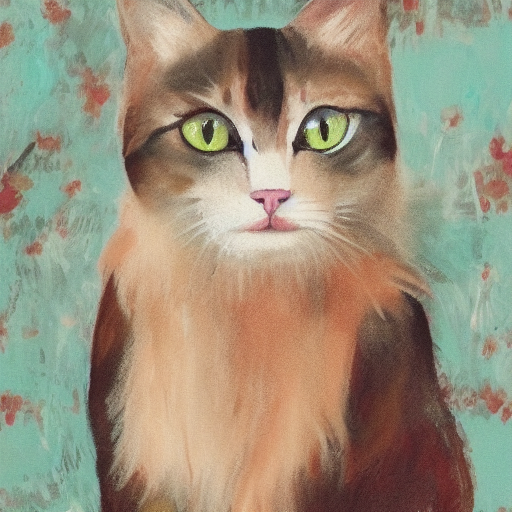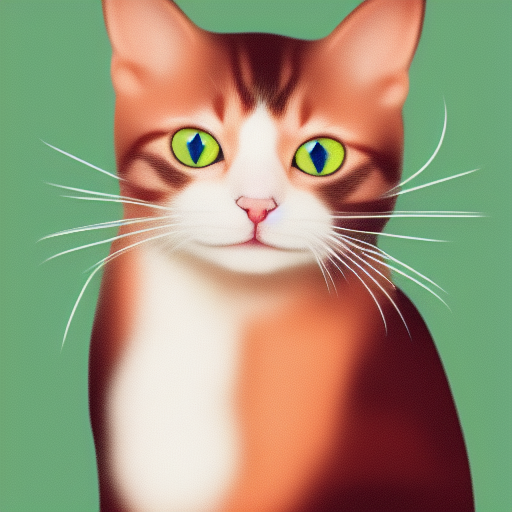Concretely, this allows switching to the "Karras" schedule from the Karras et al 2022 paper, equivalent to the samplers marked as "Karras" in the AUTOMATIC1111 WebUI. This choice is in principle orthogonal to the sampler choice and can be given independently. |
||
|---|---|---|
| .github/workflows | ||
| assets | ||
| examples | ||
| ggml@6958cd05c7 | ||
| models | ||
| .dockerignore | ||
| .gitignore | ||
| .gitmodules | ||
| CMakeLists.txt | ||
| Dockerfile | ||
| LICENSE | ||
| README.md | ||
| rng_philox.h | ||
| rng.h | ||
| stable-diffusion.cpp | ||
| stable-diffusion.h | ||
stable-diffusion.cpp
Inference of Stable Diffusion in pure C/C++
Features
- Plain C/C++ implementation based on ggml, working in the same way as llama.cpp
- 16-bit, 32-bit float support
- 4-bit, 5-bit and 8-bit integer quantization support
- Accelerated memory-efficient CPU inference
- Only requires ~2.3GB when using txt2img with fp16 precision to generate a 512x512 image
- AVX, AVX2 and AVX512 support for x86 architectures
- SD1.x and SD2.x support
- Original
txt2imgandimg2imgmode - Negative prompt
- stable-diffusion-webui style tokenizer (not all the features, only token weighting for now)
- Sampling method
Euler AEulerHeunDPM++ 2MDPM++ 2M v2
- Cross-platform reproducibility (
--rng cuda, consistent with thestable-diffusion-webui GPU RNG) - Supported platforms
- Linux
- Mac OS
- Windows
- Android (via Termux)
TODO
- More sampling methods
- GPU support
- Make inference faster
- The current implementation of ggml_conv_2d is slow and has high memory usage
- Continuing to reduce memory usage (quantizing the weights of ggml_conv_2d)
- LoRA support
- k-quants support
Usage
Get the Code
git clone --recursive https://github.com/leejet/stable-diffusion.cpp
cd stable-diffusion.cpp
- If you have already cloned the repository, you can use the following command to update the repository to the latest code.
cd stable-diffusion.cpp
git pull origin master
git submodule init
git submodule update
Convert weights
-
download original weights(.ckpt or .safetensors). For example
- Stable Diffusion v1.4 from https://huggingface.co/CompVis/stable-diffusion-v-1-4-original
- Stable Diffusion v1.5 from https://huggingface.co/runwayml/stable-diffusion-v1-5
- Stable Diffuison v2.1 from https://huggingface.co/stabilityai/stable-diffusion-2-1
curl -L -O https://huggingface.co/CompVis/stable-diffusion-v-1-4-original/resolve/main/sd-v1-4.ckpt # curl -L -O https://huggingface.co/runwayml/stable-diffusion-v1-5/resolve/main/v1-5-pruned-emaonly.safetensors # curl -L -o https://huggingface.co/stabilityai/stable-diffusion-2-1/blob/main/v2-1_768-nonema-pruned.safetensors -
convert weights to ggml model format
cd models pip install -r requirements.txt python convert.py [path to weights] --out_type [output precision] # For example, python convert.py sd-v1-4.ckpt --out_type f16
Quantization
You can specify the output model format using the --out_type parameter
f16for 16-bit floating-pointf32for 32-bit floating-pointq8_0for 8-bit integer quantizationq5_0orq5_1for 5-bit integer quantizationq4_0orq4_1for 4-bit integer quantization
Build
Build from scratch
mkdir build
cd build
cmake ..
cmake --build . --config Release
Using OpenBLAS
cmake .. -DGGML_OPENBLAS=ON
cmake --build . --config Release
Run
usage: ./bin/sd [arguments]
arguments:
-h, --help show this help message and exit
-M, --mode [txt2img or img2img] generation mode (default: txt2img)
-t, --threads N number of threads to use during computation (default: -1).
If threads <= 0, then threads will be set to the number of CPU physical cores
-m, --model [MODEL] path to model
-i, --init-img [IMAGE] path to the input image, required by img2img
-o, --output OUTPUT path to write result image to (default: .\output.png)
-p, --prompt [PROMPT] the prompt to render
-n, --negative-prompt PROMPT the negative prompt (default: "")
--cfg-scale SCALE unconditional guidance scale: (default: 7.0)
--strength STRENGTH strength for noising/unnoising (default: 0.75)
1.0 corresponds to full destruction of information in init image
-H, --height H image height, in pixel space (default: 512)
-W, --width W image width, in pixel space (default: 512)
--sampling-method {euler, euler_a, heun, dpm++2m, dpm++2mv2}
sampling method (default: "euler_a")
--steps STEPS number of sample steps (default: 20)
--rng {std_default, cuda} RNG (default: cuda)
-s SEED, --seed SEED RNG seed (default: 42, use random seed for < 0)
-v, --verbose print extra info
txt2img example
./bin/sd -m ../models/sd-v1-4-ggml-model-f16.bin -p "a lovely cat"
Using formats of different precisions will yield results of varying quality.
| f32 | f16 | q8_0 | q5_0 | q5_1 | q4_0 | q4_1 |
|---|---|---|---|---|---|---|
 |
 |
 |
 |
 |
 |
 |
img2img example
./output.pngis the image generated from the above txt2img pipeline
./bin/sd --mode img2img -m ../models/sd-v1-4-ggml-model-f16.bin -p "cat with blue eyes" -i ./output.png -o ./img2img_output.png --strength 0.4
Docker
Building using Docker
docker build -t sd .
Run
docker run -v /path/to/models:/models -v /path/to/output/:/output sd [args...]
# For example
# docker run -v ./models:/models -v ./build:/output sd -m /models/sd-v1-4-ggml-model-f16.bin -p "a lovely cat" -v -o /output/output.png
Memory/Disk Requirements
| precision | f32 | f16 | q8_0 | q5_0 | q5_1 | q4_0 | q4_1 |
|---|---|---|---|---|---|---|---|
| Disk | 2.7G | 2.0G | 1.7G | 1.6G | 1.6G | 1.5G | 1.5G |
| Memory(txt2img - 512 x 512) | ~2.8G | ~2.3G | ~2.1G | ~2.0G | ~2.0G | ~2.0G | ~2.0G |

